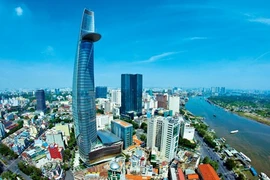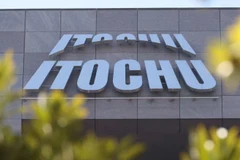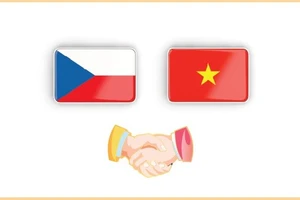Thecommentary, titled “Ambitious and smart, youths in Ho Chi Minh City are buildingAsia’s Silicon Valley” by Stephanie Jones and Rafael Masters, said that Vietnam,for the last few years, has seen remarkably strong, continuous growth,averaging 6.15 percent each year since 2000.
Urbanisation and a growing middle class arefuelling economic growth and driving the creation of new commercialopportunities. 50 percent of the population have access to the internet andmore than a third use smartphones, according to the article.
At the same time, Vietnam has becomeincreasingly attractive for new investors, and local talent is developingrapidly, even as the country has to compete against Singapore, Hong Kong(China) and other regional stars.
In particular, Vietnam’s software industry ispoised to become the Silicon Valley of Asia, especially through the aptly named1.5 billion USD project Silicon City, located just outside Ho Chi Minh City.
Stephanie Jones and Rafael Masters shared the view that indeed, HCM City presents itself as thejewel in the crown of Vietnam’s success story.
They said as Vietnam’s largest and most progressive city, HCM Cityis the engine of the country’s growth. At a growth rate of 8.5 percent a year,HCM City has been transformed in the last ten years – with plans for a newairport in the pipeline in addition to a mushrooming central business districtand a massive growth in waterfront developments.
HCM City is also the epicentre of thestart-up scene in Vietnam, where most of Vietnam’s 3,000 start-ups operate. InMay 2016, early-stage venture fund 500 startups pledged a further 10 millionUSD to their Vietnam fund. Other venture capital companies like CyberAgent, Venturesand SeedCom are also active and investing in new firms, the writers added.
HCM City has even produced one of SoutheastAsia’s unicorns – game developer VNG which became the first Vietnamesetechnology company to hold an IPO in the US in June, and has more than 70million users from Vietnam, Myanmar, Japan, the Republic of Korea and Malaysiaon its chat app called Zalo alone.
Stephanie Jones and Rafael Masters said thatHCM City’s start-up scene may involve new and emerging technology, but at itscore is a story about people.
Over the past ten years, thousands of young,aspiring Vietnamese entrepreneurs have moved into the city to create their ownstart-ups – many of which are in developing tech solutions including e-commerceplatforms, apps and games.
Coworking spaces and cafes also have sprungup all across the city to meet the demands of a class of entrepreneurs whonetwork frequently and work in small groups without a dedicated office space,they explained.
The start-up scene owes its success in partdue to the strong push by the Vietnamese government. Officials have promisedfinancial support of 90 million USD tomore than 2,000 local hi-tech start-ups, and made plans to set up innovationhubs that provide training programmes, legal consulting and networkingactivities to connect start-ups with universities and research centres.
They stressed that but the keydifferentiator that makes Vietnam's start-up scene particularly vibrant is thequality of the Vietnamese people working in that sector.
Vietnamese talent is internationally competitive,increasingly well-educated, mobile and tech-savvy.
Vietnam has a high literacy rate of 94.5percent and OECD studies have placed Vietnam 17th out of 65 countries on PISAtests. The Government promises to improve the academic qualifications andbusiness capabilities of its workforce seem to be bearing fruit. Education alsocontinues to make up 20 percent of Government spending.
Vietnamese college and university studentshave been scoring very highly in internationally ranked tests in recent years,offering a pool of skilled labour for prospective entrepreneurs.
Many young Vietnamese are also sent overseasto study and return with grand ideas of starting their own companies. Anestimated 21,000 Vietnamese students attended American universities last year,the sixth largest number of foreign students in the US.
Stephanie Jones and Rafael Masters said thestudents they have encountered in their work in HCM City are smart, bright andspunky.
Unlike developed countries like Singapore,Vietnam is experiencing the dividends of a population boom. 70 percent of thepopulation of Vietnam is under 30, and Vietnamese youths are highly ambitiousand internationally-minded, they commented.
They take ideas like the transport sharingeconomy Grab and Uber introduced, and try to implement them in a way moresuited to the Vietnamese market.
Young and well-educated Vietnamese bornoverseas are returning in droves and adding to the pool of talent.
Even though Vietnam is attracting ambitiousyoung executives from all over Asia, many say they find it hard to compete withbright and savvy local talent, according to the article.
Young Vietnamese are able to focus onbuilding strong start-ups because they also enjoy family support: Vietnamesefamily units typically consist of three generations living in a single house.Without a pension system, children take care of parents in old age andgrandparents provide childcare and support while young parents are out working.
This strong family nucleus has been a sourceof support and safety net for young Vietnamese executives. They can devote moretime and energy to their businesses, secure in the knowledge that they can turnto their parents to manage the household and not worry about childcare.
In this respect, Vietnamesetalent with families have a huge advantage over those in other countries, andeven over expatiates living on their own in Vietnam, they said.
All things considered, Vietnam is in a sweetspot now. Its ease of doing business is on par with China and recruitmentdemand is up 32 percent.
Strong growth is likely to persist, the article said, citing the World Bank’s statistics assaying that Vietnam’s economy could expand at an average of 6.3 percent in thenext three years.
With a young, ambitious and businesssavvy-Vietnamese population, it is not hard to see why, it concluded.-VNA





























